Imagine a world where industrial facilities operate at peak efficiency, with lighting systems that not only illuminate but also enhance productivity. This comprehensive guide to LED industrial lighting is your gateway to such a reality.
Many industries still grapple with outdated lighting systems, unaware of the transformative power of LEDs. Common misconceptions, such as high initial costs and complex installations, often deter businesses from making the switch.
Yet, the benefits of LED lighting are undeniable—reduced energy costs, improved safety, and enhanced environmental sustainability. In this guide, we’ll explore key topics including cost analysis, installation tips, and maintenance strategies.
Ready to revolutionize your industrial lighting? Dive into this guide and discover how LED technology can illuminate your path to success.
Understanding LED Technology
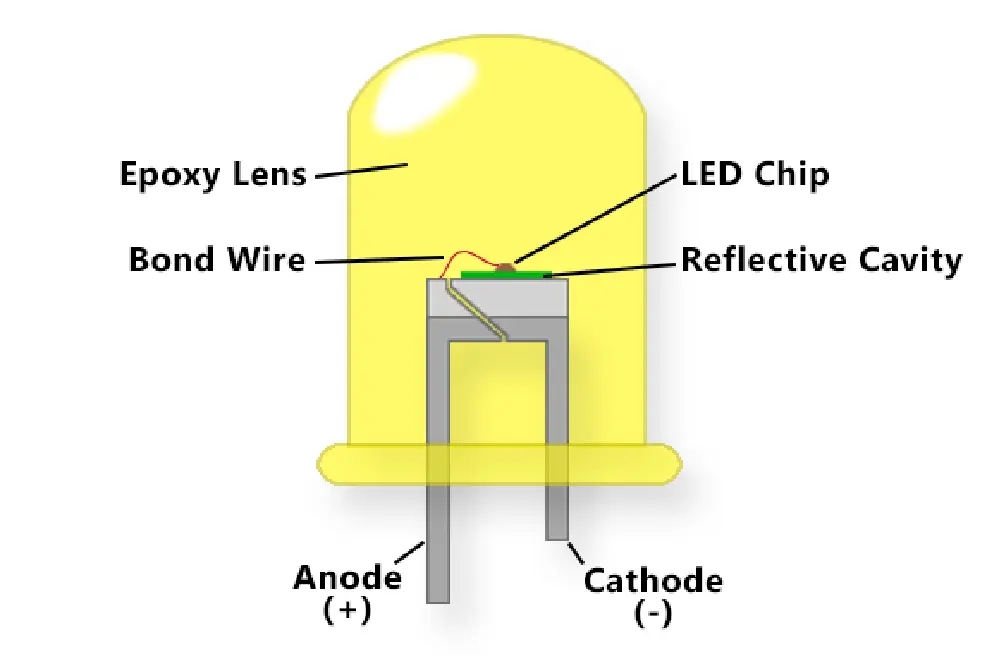
Pioneering a revolution in illumination, Light Emitting Diodes (LEDs) stand at the forefront. Unlike traditional lighting solutions, LEDs utilize semiconductors to emit light efficiently, significantly reducing energy consumption and extending lifespan. Their robustness and adaptability are transformative for industrial applications.
Basics of LED Functionality
LEDs operate using semiconductor technology—emitting light as current passes through and exciting electrons within the diode.
LEDs achieve up to 90% greater efficiency than traditional incandescent lighting, allowing for superior brightness and energy savings.
This fundamental process significantly reduces heat output, elevating advantages for varied industrial scenarios. These robust features contribute to their widespread adoption across manufacturing, warehousing, and production environments.
Embracing LED technology offers not only enhanced durability and efficiency but also integrates seamlessly into smart systems, adapting dynamically to evolving industrial needs.
Advantages Over Traditional Lighting
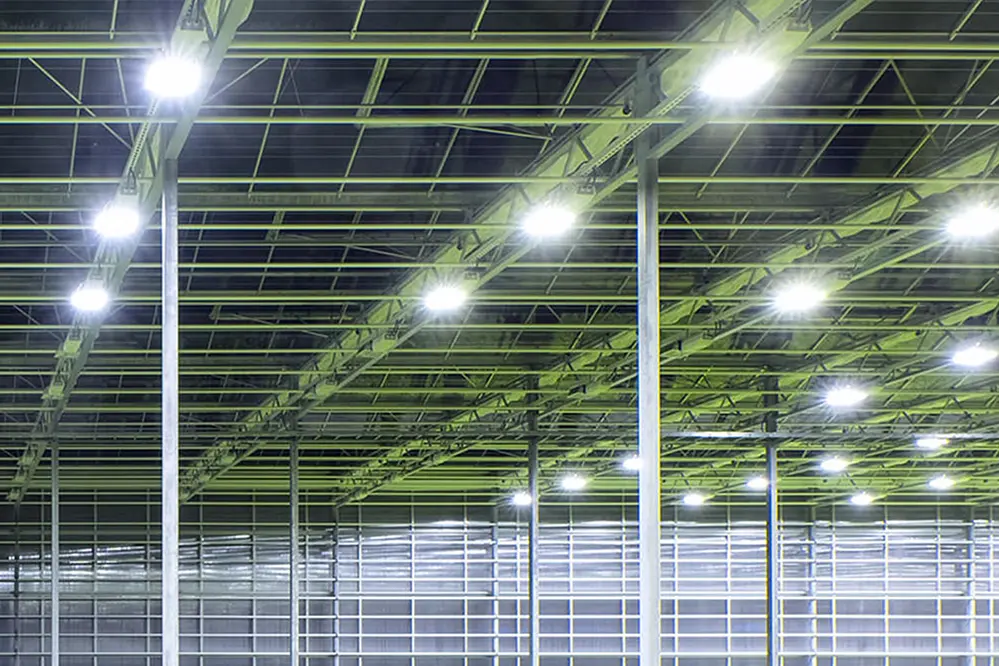
LED industrial lighting significantly outperforms traditional lighting, offering a myriad of benefits beyond simple illumination.
- Energy Efficiency: LEDs consume up to 90% less energy than incandescent bulbs, significantly reducing electricity costs.
- Longevity: LED lights can last over 50,000 hours, exponentially outlasting traditional options such as fluorescents or incandescents.
- Durability: With solid-state components, LEDs withstand shock, vibration, and external impacts far better than conventional lighting.
- Environmental Impact: Reduced energy use translates to lower carbon emissions, and LEDs contain no harmful mercury.
- Maintenance Costs: Less frequent replacements and reduced labor requirements lower overall maintenance expenses.
This transition not only translates to cost savings but also enhances operational efficiency in industrial settings.
By embracing LED lighting, industries can innovate responsibly, aligning with both economic and environmental objectives while staying ahead of technological advancements.
Choosing the Right LED Industrial Lighting
Selecting energy-efficient LED lighting is essential to maximizing your facility’s safety, cost efficiency, and environmental benefits.
When evaluating options, focus on factors like luminous efficacy (measured in lumens per watt) to determine how effectively each option converts energy into illumination. Also consider the task lighting capabilities of the fixture and its durability, ensuring it withstands specific industrial conditions like dust and moisture.
Prioritize “dimmability” and “color temperature” for customization to the facility’s lighting needs.
Factors to Consider
Consider energy efficiency first and foremost.
One of the most crucial aspects to evaluate is the energy consumption of your LED fixtures. LEDs are renowned for their efficiency, but models vary in their energy usage. Be sure to examine the specific metrics of luminous efficacy and power factor to optimize your energy savings. Moreover, look into how the lighting aligns with the operational requirements of your facility.
Durability is paramount in industrial environments.
Industrial settings often expose lighting fixtures to harsh conditions. Opt for LED lights designed to withstand extreme temperatures, vibrations, dust, and moisture. Ensure they have appropriate ratings, such as ingress protection (IP) ratings, to guarantee long-lasting performance.
Finally, consider the total cost of ownership, including the role of commercial LED lighting in your decision.
Beyond the initial cost, ponder the long-term financial implications. Assess factors such as maintenance costs, warranty coverage, and available rebates or incentives. Choosing high-quality LED industrial lighting can significantly enhance your return on investment by reducing operation and maintenance expenses over time.
Types of Industrial LED Lights
Industrial LED lights come in various types and forms.
High bay LED lights are used for tall ceilings. These lights, uniquely suited for both high-impact areas and expansive spaces, offer an unparalleled advantage for industrial settings such as warehouses. Moreover, they are lauded for their superb efficiency in accentuating productivity and safety in these large environments, while task lighting offers focused, localized illumination for specific work areas, making them an ideal choice for warehouse lighting.
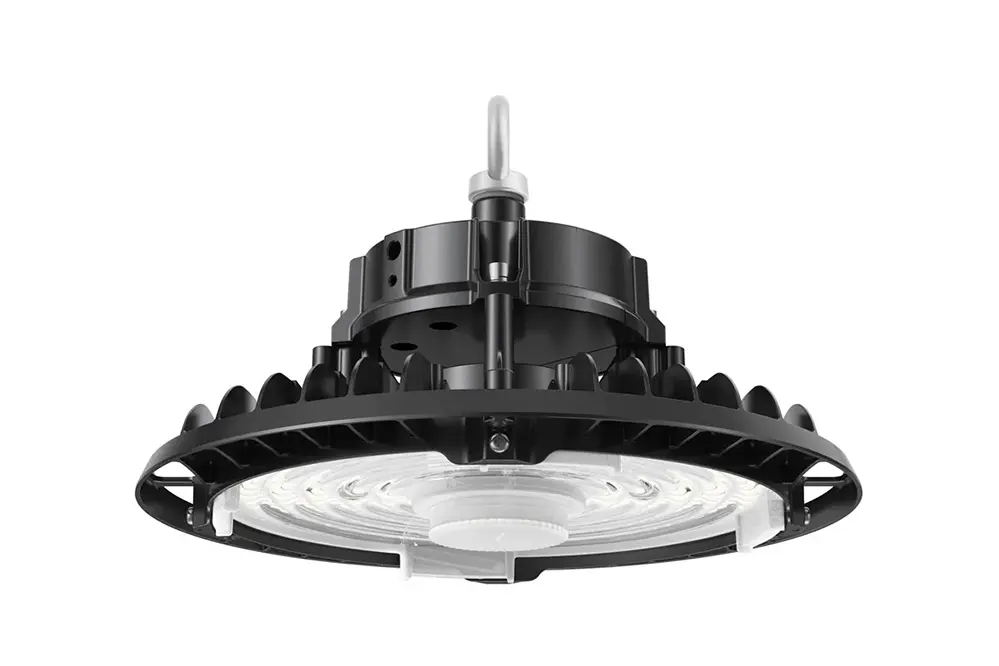
Low bay lights illuminate spaces with lower ceilings.
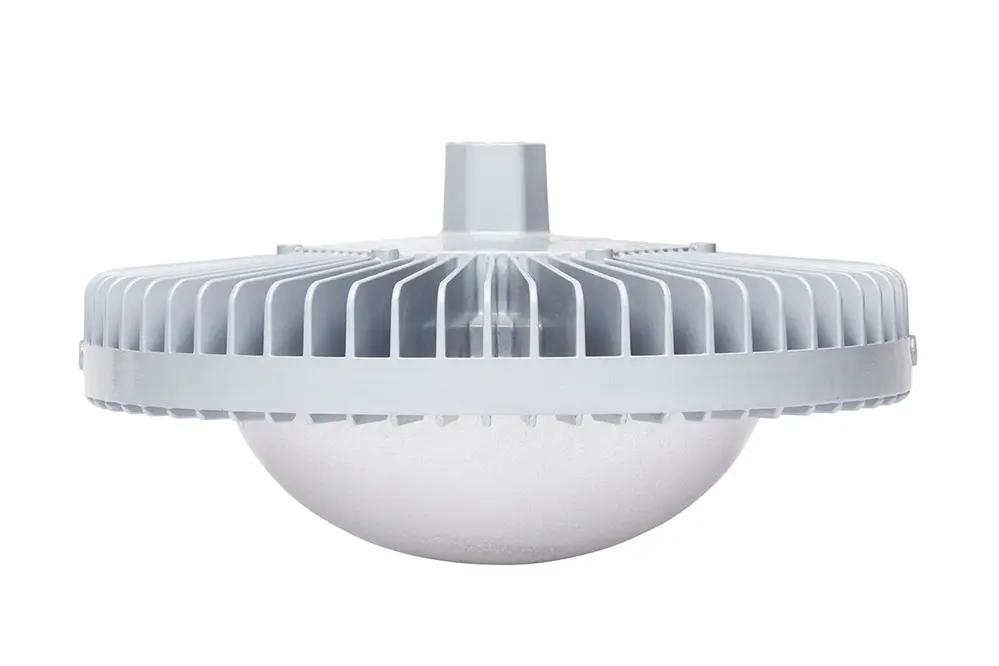
In addition to these, LED flood lights play a critical role – they are the unsung heroes of outdoor lighting applications, designed to withstand the rigors of outdoor environments while providing even, powerful illumination.
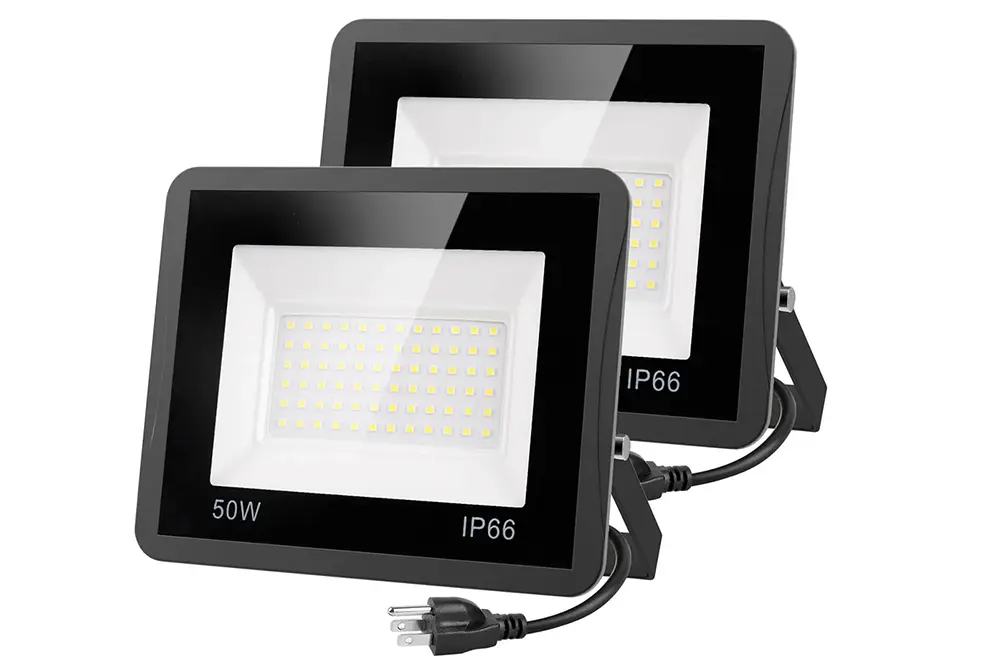
These myriad types of lighting options, including commercial LED lighting, empower industrial facilities to tailor their illumination strategy. Innovations in LED technology continue to improve choices as we progress through 2023 and beyond. With these lights, industries unlock improved efficiency, reduced energy consumption, and exceptional illumination tailored to specific needs.
Installation and Maintenance
When it comes to the installation and retrofitting of LED industrial lighting, a strategic and meticulous approach is paramount. Selecting the correct fixtures and positioning them to optimize illumination is essential, ensuring that every corner of your facility is well-lit and conducive to productivity.
Maintenance of LEDs is minimal compared to traditional lighting, thanks to their “set-it-and-forget-it” nature. This is not to say that a review is never necessary; occasional inspections can help in identifying any performance drops. As LEDs boast significant longevity, maintenance is chiefly about confirming operational efficiency, preserving the lighting system’s brilliance and efficacy well into the future.
Proper Installation Tips
Ensuring proper installation of LED industrial lighting maximizes efficiency and lifespan, minimizing disruptions and maintenance needs.
- Conduct a Site Assessment: Evaluate the area beforehand to identify optimal lighting needs and ensure adequate positioning of fixtures.
- Select Appropriate Fixtures: Choose fixtures that match your facility’s operational conditions, such as temperature and humidity levels.
- Consult Professional Installers: Engage with certified professionals to guarantee compliant and safe installation of lighting systems.
- Properly Position Lights: Install fixtures at calculated heights and angles to achieve uniform lighting distribution across spaces.
- Test and Adjust: Post-installation checks are vital; adjust if necessary to attain ideal illumination and functionality.
Properly installed systems not only pay off in performance but also foster a safe environment for all operational activities.
By following these tips, you can unlock the full potential of LED industrial lighting, driving enhanced productivity and sustainability.
Maintenance Best Practices
Implementing routine maintenance ensures longevity.
LED industrial lighting systems offer incredible durability. However, to truly capitalize on their benefits, it’s essential to adhere to consistent maintenance practices. Regular cleaning of the fixtures can prevent the accumulation of dust and debris, which can otherwise diminish light output. Additionally, scheduling periodic inspections will help in the early detection of potential issues, such as wiring damage or fixture malfunctions, thereby preventing unexpected downtimes.
Modern LEDs often alert when replacements are necessary.
It is advisable to compile a maintenance log. This record will allow you to monitor the performance and lifespan of each light fixture, which is invaluable for both operational efficiency and budgeting future replacements. By examining consumption patterns and any anomalies, facility managers can forecast and prepare for any needed repairs or upgrades, ensuring the lighting system remains optimal.
These proactive strategies offer maximum effectiveness across various industrial environments, catalyzing efficiency and safety as we progress towards a more illuminated future. Embracing the advancements presented by 2023 will sustain the value and resilience of your LED lighting investments. This dedication instills confidence, providing innovative lighting solutions for years to come.
Cost and Energy Efficiency
LED industrial lighting shines as a beacon of cost and energy efficiency, delivering exceptional economic value. Transitioning to LED systems might initially present a higher investment, but the significant reduction in energy costs swiftly offsets this expenditure, leading to substantial long-term savings.
In evaluating the benefits of LED over traditional lighting, consider the concept of “total cost of ownership.” This metric accounts for not only immediate expenses but also ongoing operational savings. On this front, the enhancement from LEDs proves formidable, as their longevity outpaces conventional alternatives, minimizing both replacement and maintenance costs. They serve as a glowing testament to sustainable innovation, making them an indispensable asset that aligns with both fiscal prudence and environmental stewardship.
Analyzing Energy Savings
Delving into energy savings, LED industrial lighting emerges as a champion for modern industry and environmental welfare.
The transition to LED technology promises a transformative impact on your facility’s energy expenditure, offering a remarkable decrease in electricity usage. LEDs utilize significantly less power than traditional lighting solutions, equating to real and tangible cost savings over time. This reduction not only slashes electric bills but also reflects a more responsible use of resources, aligning with global sustainability initiatives.
Furthermore, these savings contribute to a positive ripple effect on operational budgets. The lower energy consumption of LEDs often results in reduced cooling costs, as these lights emit less heat. This dual energy-saving advantage positions LED lighting as an astute choice for organizations striving to cut costs while enhancing their environmental responsibility.
Ultimately, evaluating the financial metrics of adopting LED industrial lighting reveals an optimistic horizon of fiscal and ecological benefits. The substantial reduction in energy costs fosters a sustainable business model, driving profitability and competitive advantage. This empowers organizations to reinvest financial savings into growth opportunities, innovating fearlessly and leading the charge towards a brighter, more sustainable future.
Calculating ROI
ROI stands for Return on Investment.
Calculating ROI for LED industrial lighting requires examining both immediate and long-term benefits. The initial investment may seem substantial, but the robust energy efficiency of LEDs means ongoing cost reductions. Consequently, this is not merely a question of expenditure but rather an evaluation of the potential to generate continuous savings.
Consider the lifespan savings.
LED lights typically last for 50,000 to 100,000 hours—significantly longer than traditional bulbs—leading to lower replacement costs over time. This longevity, combined with decreased energy expenditure, contributes to a fast and advantageous ROI.
Evaluating ROI involves comprehensive consideration of factors such as energy savings, maintenance cost reductions, and enhanced productivity due to better lighting quality, culminating in a stronger financial position. Such calculated investment in LED technology propels industries toward sustainable, profitable operations aligned with 2023’s forward-thinking business strategies.
Latest Trends in LED Industrial Lighting
Today’s LED advancements encompass a stunning array of innovative solutions, designed for dynamic industrial environments, brightening every corner. Adaptive lighting and smart control systems now redefine efficiency standards, ensuring tailored illumination at optimal levels, ready to fuel your business’s productivity forward.
Smart Lighting Innovations
The landscape of industrial lighting is evolving rapidly with smart lighting innovations transforming how industries operate.
- Automated Lighting Controls: Enhance efficiency by adjusting light levels based on occupancy and the time of day.
- IoT Integration: Connects lighting systems to the internet for remote monitoring and control, allowing real-time adjustments.
- Predictive Maintenance: Leverages data analytics to anticipate and address potential issues before they lead to system failures.
- Energy Management Systems: Offers comprehensive insights and control over energy consumption, optimizing use and reducing costs.
- Human-Centric Lighting: Aligns lighting with the natural circadian rhythms, improving workers’ wellbeing and boosting productivity.
These innovations cater to the need for increased efficiency and sustainability in industrial settings.
By embracing smart lighting solutions, businesses can achieve significant energy savings while enhancing operational effectiveness and workplace comfort.
Environmental Impact
Transitioning to LED industrial lighting significantly reduces carbon emissions, promoting a cleaner, more sustainable environment.
- Energy Efficiency: LED lights consume up to 80% less energy, decreasing fossil fuel reliance.
- Reduced Waste: Longer lifespan of LEDs means fewer replacements and a reduction in landfill waste.
- Lower Toxicity: Unlike fluorescent lighting, LEDs contain no harmful mercury, reducing hazardous waste.
- Diminished Light Pollution: LEDs concentrate light more precisely, minimizing unnecessary illumination and preserving night skies.
Adopting LED lighting solutions in industrial settings advances environmental stewardship.
Together, industries can forge a path towards a more sustainable future, benefiting both the planet and future generations.
Conclusion and Next Steps
Incorporating LED industrial lighting is a transformative step towards a brighter, more sustainable future. By prioritizing energy efficiency and environmental impact, industries can triumphantly set new standards of excellence, sustainability, and innovation.
Your journey doesn’t end here; explore emerging technologies and continue refining lighting strategies to unlock their full potential. Stay committed to innovation, and relentless transformation will follow.
Implementing LED Solutions
Implementing LED solutions in industrial environments requires strategic planning, proactive investment, and a forward-thinking vision to optimize lighting infrastructure effectively, enhancing both operational efficiency and sustainability.
Key stakeholders must address the initial infrastructure needs that align with long-term sustainability goals.
Moreover, assessing current lighting positioning and outputs, alongside ROI (return on investment) calculations, fosters strategic decision-making.
Tailoring solutions to specific industrial applications is paramount for maximizing luminous efficacy and enhancing work environments.
These insights contribute to building robust business cases for adopting LED technology, demonstrating how incremental investments yield substantial dividends by reducing costs and carbon footprints.
Ultimately, the road to success lies in meticulous execution. Detailed evaluation protocols and continuous optimization ensure lasting benefits.
Future Prospects for Industrial LED Lighting
LED technology is poised for exponential growth, transforming the landscape of industrial and commercial LED lighting with its myriad advantages and potential innovations.
In the coming years, as industries increasingly prioritize a sustainable future, the demand for lighting solutions that offer energy efficiency, longevity, and environmental stewardship will only intensify. LED industrial lighting, with its unrivaled ability to reduce power consumption and extend fixture lifespan, stands positioned at the forefront of this transformative wave. Rapid advancements in smart lighting systems are further projected to bolster industrial operational efficiency substantially.
Remarkably, industries are about to witness a new era of connectivity and automation. Through the integration of IoT-enabled LEDs, facilities can achieve unprecedented levels of control over lighting conditions—tailoring illumination seamlessly to environmental requirements and dynamic workflow changes. This interconnected ecosystem promises to enhance workplace safety and productivity.
Therefore, the innovative trajectory within LED lighting will likely yield breakthroughs in adaptability, with responsive and personalized lighting gaining traction across varied sectors. This transformation not only seeks to redefine the efficiency metrics for industries but also champions a brighter and more sustainable horizon. By harnessing this luminous potential, businesses can illuminate pathways to enhanced resilience and operational excellence.





